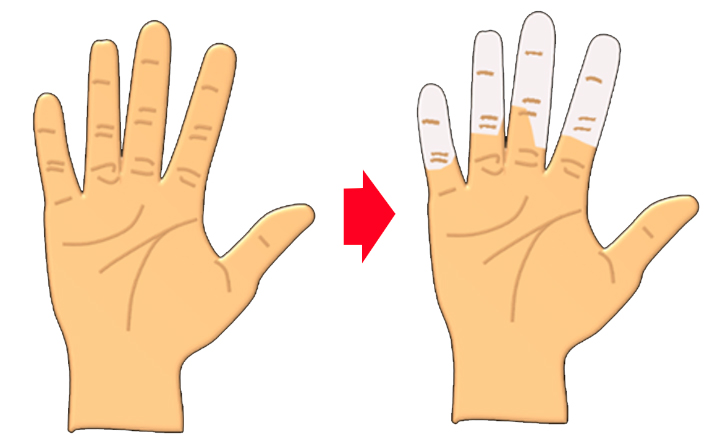ErgoInfo
Hand Arm Vibration Syndrome (HAVS)
What is Hand Arm Vibration Syndrome (HAVS)?
Hand-Arm Vibration Syndrome (HAVS) is a condition that can affect the vascular, neurological and muscular systems of the hands.
Regular exposure to high frequency vibrating hand tools/equipment (dependent upon the magnitude, frequency, and duration) such as jackhammers, chisels, chainsaws, sanders, grinders, drills etc., increases the risk of developing HAVS.
Some of the trades/industries in which workers are at risk include construction, forestry, foundry, assembly manufacturing, mining and agriculture.
HAVS is characterized by
- Bluish discoloration (cyanosis) of the skin of fingers and hands.
- Whitening (blanching) of fingertips (especially with colder temperatures). (Fig. 1)
- Numbness, with or without tingling.
- Decreased grip strength and sense of touch.

Ergonomic Risk Factors
Specific Recommendations for Prevention
- Prior to purchasing vibrating tools, be aware of vibration levels to determine level of risk.
- Eliminate or minimize exposure to vibration.
- Perform regular preventative maintenance.
- Provide jigs designed to minimize the need to hold vibrating surfaces.
- Provide anti-vibration handles/sleeves.
- Implement a work/rest schedule to minimize vibration exposure.
- Minimize forceful grasps.
- Use proper fitting personal protective equipment such as anti-vibration gloves (ISO approved).
- Educate workers (or yourself) on how to recognize:
- Symptoms (like finger tingling, numbness, and finger blanching).
- Associated risks of vibration exposure.
- Possible sources of vibration in the workplace.
- Health effects of working in cold temperatures.
Additional Resources and Tools
For industry/workplace specific recommendations contact an OHCOW Ergonomist to have an assessment performed.
ISO 10819:2013 - Mechanical vibration and shock
Vibration Workshop (2014): Controls for Whole Body and Hand-Arm Vibration
The hand-arm vibration exposure calculator
Vibration - Measurement, Control and Standards


Comments are closed.